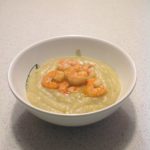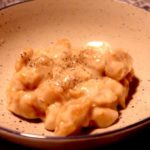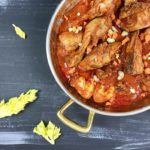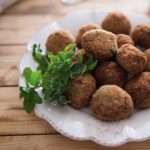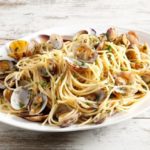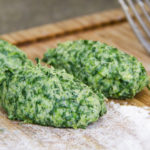SPINACH PUDDING WITH PARMIGIANO SAUCE
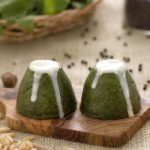
This sformato (pudding ) is an extremely simple but elegant way to create a main course which is quite unusual and tasty. In the Italian tradition, there is a rich collection of this kind of dish, made with vegetables and cheeses, or rice and pasta and complemented sauces.
Spinach pudding is an excellent escamotage to make people who do not love vegetables to enjoy them. I have always loved the combination of Spinach sautè in a pan with butter and then enriched by a generous sprinkle of Parmesan. In my family, it was a way to make us respect the prohibition of eating meat on Friday and we cooked eggs with the spinach. Fundamentally, these are the same ingredients, but the presentation is much nicer.
This spinach pudding is ideal for vegetarians or guest who follow a gluten-free diet if you remember to replace the normal flour of the sauce with a gluten-free one.
Ingredients for the puddings
- 2,5 oz. (80 g.) grated Parmigiano
- 17 oz. (500 g.) frozen spinach
- 1 oz. (30 g). pine nuts
- 4 medium eggs
- 1 pinch freshly grated nutmeg
- Sea salt
- Freshly milled black pepper
- 1 tablespoon olive oil
- 1 garlic clove
- Butter and breadcrumbs for the ramequins
Ingredients for the Parmigiano sauce
- 1 cup (250 ml) whole milk
- 3 tablespoons (25 gr.) 00 flour
- 2 tablespoons (30 g.) butter
- 1 oz. (30 g.) grated Parmesan
Instructions for the puddings
Cook the raw spinach in a large pot of salted boiling water until just cooked through, about 1 minute. If using frozen spinach, let defrost, or microwave.
Using a slotted spoon, transfer the cooked spinach in small batches to a sieve. Use the sieve to squeeze ALL the water out of the spinach by pushing the spinach against the sieve.
In a frying pan, fry the garlic clove in the oil until the garlic is golden. Discard the garlic and sauté the spinach in the flavored oil.
Place spinach and pine nuts in a food processor and pulse. Add the other ingredients. Make sure the spinach is in tiny pieces and the mixture is thoroughly combined.
Carefully spread the ramequins with butter, line with breadcrumbs, and pour the mix to three quarters fill the ramequins.
Bake in a pre-heated oven at 400F – 200C for 30 minutes.
Instructions for the Parmigiano sauce
In a small pot, melt the butter and add the flour and salt. When your roux is golden add the warm milk (not boiled) and mix with a whisk. Bring to a simmer and thicken for 5-6 minutes, constantly mixing with a whisk. Take the pot off the stove and add gradually the Parmesan, whisking until the cheese is perfectly melted. Your sauce is ready to complement the pudding.
